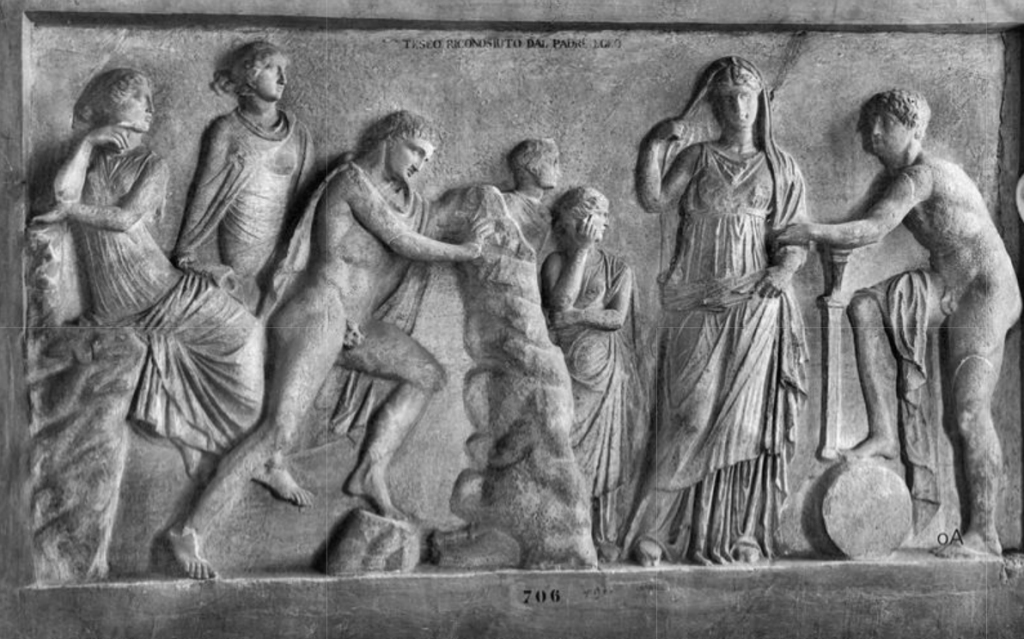Relief with Theseus and Aethra
Seen by Vulpi in 1732 in a vineyard in Ostia, and in the same location by Winckelmann in 1763.
Date: late first century BC. W. 1.97, h. 1.11, d. 0.10.
In this framed relief we see part of the myths related to Theseus (better known from the story of the Minotaur, the labyrinth and Ariadne). His father Aegeus, leaving his pregnant wife Aethra in Troezen in the Peloponnese, hid his shoes and sword under a rock and asked Aethra, if she had given birth to a son, not to tell him who his father was until the boy had showed that he was able to roll the boulder away. Then she must send her son to Athens with the shoes and sword as identification marks.
The left part of the relief shows Theseus pushing away the rock, below which the shoes and hilt of the sword of his father are visible. He is being watched by two girls. The scene on the right has been interpreted as either Aegeus explaining to Aethra the test for his future son, or as Theseus about to begin his journey to Athens, saying goodbye to his mother. The latter explanation is more likely, because of the resemblance of the two male figures.

Inv. nr. 706. Volpi, Latium Vetus VI (1734), Tav. XV. Joh. Winckelmanns Werke, Stuttgart 1847, vol. 2, 214. Morcelli - Fea - Visconti 1869, 106-107. Helbig II (1913), nr. 1924. Helbig IV (1972), nr. 3346. Arachne 27990. Photo: Arachne.